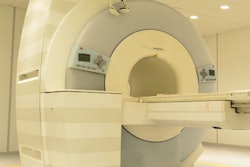
U.S. hospitals could be losing up to $400 million annually on placing MRI-compatible cardiac rhythm management (CRM) devices in patients due to a discrepancy between what the devices cost and what Medicare is paying for them, according to a new report by group purchasing organization Vizient.
Newer implanted CRM devices cost more than older models, but Medicare reimbursement hasn't caught up to the new pricing, leaving hospitals left to cover the shortfall. With Medicare patients representing 70% to 75% of all recipients of implanted cardiac devices, hospitals have had to increase their total spending for CRM devices by 8%.
"While there is clinical benefit to these devices, the data from Vizient suggest more research must be done and hospital value analysis teams need to collaborate with physicians to determine the true need for these devices for their patients," Vizient wrote in its report.
Compared with standard implants, hospitals pay a premium of 17.7% for an MRI-compatible pacemaker, 17% for an implantable defibrillator, and 18.6% for resynchronization therapy devices, according to the firm. Despite the increase, Medicare reimbursement rates are the same for MRI-compatible devices as they are for older models that aren't designed to continue functioning in MRI environments.
What's more, the use of MRI-compatible implanted devices has expanded over the past 18 months to where they are "on track to become the standard of care," Vizient wrote. In the past three years, the utilization of MRI-compatible pacemakers has increased sixfold, while implantable cardioverter defibrillators and resynchronization therapy pacemakers have also experienced double-digit growth.
| Utilization of MRI-compatible CRM devices | |||
| Device | 2016 | 2017 | 2018 |
| Implantable pacemaker | 12.3% | 57.2% | 69.9% |
| Implantable cardiac defibrillator | 2.1% | 22.8% | 48.5% |
| Resynchronization therapy pacemaker | 18.4% | 25.1% | 30.0% |
Somewhat incongruous to the increasing utilization trend is a sharp decline in MRI scans among patients 69 years and older. Contributing factors may include "reduced population size and a higher number of patients with other implantable devices that contain ferrous metals, which contraindicates the [MRI] procedure," the company wrote. "At the same time, Vizient data shows CRM implantation peaks at 79 years of age. The apparent data mismatch highlights the need for clinicians to consider future MRI needs in patient selection for these types of devices."
"The data is unclear as to whether the declining number of MRI procedures in the older population is due to lack of necessity, limitations created from implanted CRM devices or other implanted medical devices, limitations created by non-MRI labeling and/or limitations on MRI reimbursement," added Doug Beinborn, senior director of contract services at Vizient, in a press release. "However, given the cost impact being experienced by providers, further research is needed to better understand this decline."
The reimbursement situation should also be of concern for device manufacturers as well.
"In the long run, the ability for vendors to maintain their premium pricing for MRI-compatible devices may not be sustainable, as the technology will likely shift to become a standard feature in the next two to four years," Vizient wrote in the report.



.fFmgij6Hin.png?auto=compress%2Cformat&fit=crop&h=100&q=70&w=100)




.fFmgij6Hin.png?auto=compress%2Cformat&fit=crop&h=167&q=70&w=250)











